Helped by high-profile celebrity mums on social media and the huge upsurge in women getting behind the camera, newborn baby photography has grown in popularity in recent years. One photographer who has been making great inroads in this area is Lisa Beaney, whose wedding photography business has broadened in recent years to cover maternity, babies and family portraits.
‘Professional photography has traditionally been very male, but a lot more women are coming into photography and opening up new markets,’ says Lisa. Baby photography is in an area in which female photographers have a natural advantage. It’s ideal for women who have a family, as it’s something that you can build around your own life.’
Lisa started shooting weddings in 2006 but, as she points out, people who get married usually go on to have babies so this became a natural extension. ‘We’re now doing more families and newborns than weddings, and that is partly a conscious choice and partly due to the changing market.’
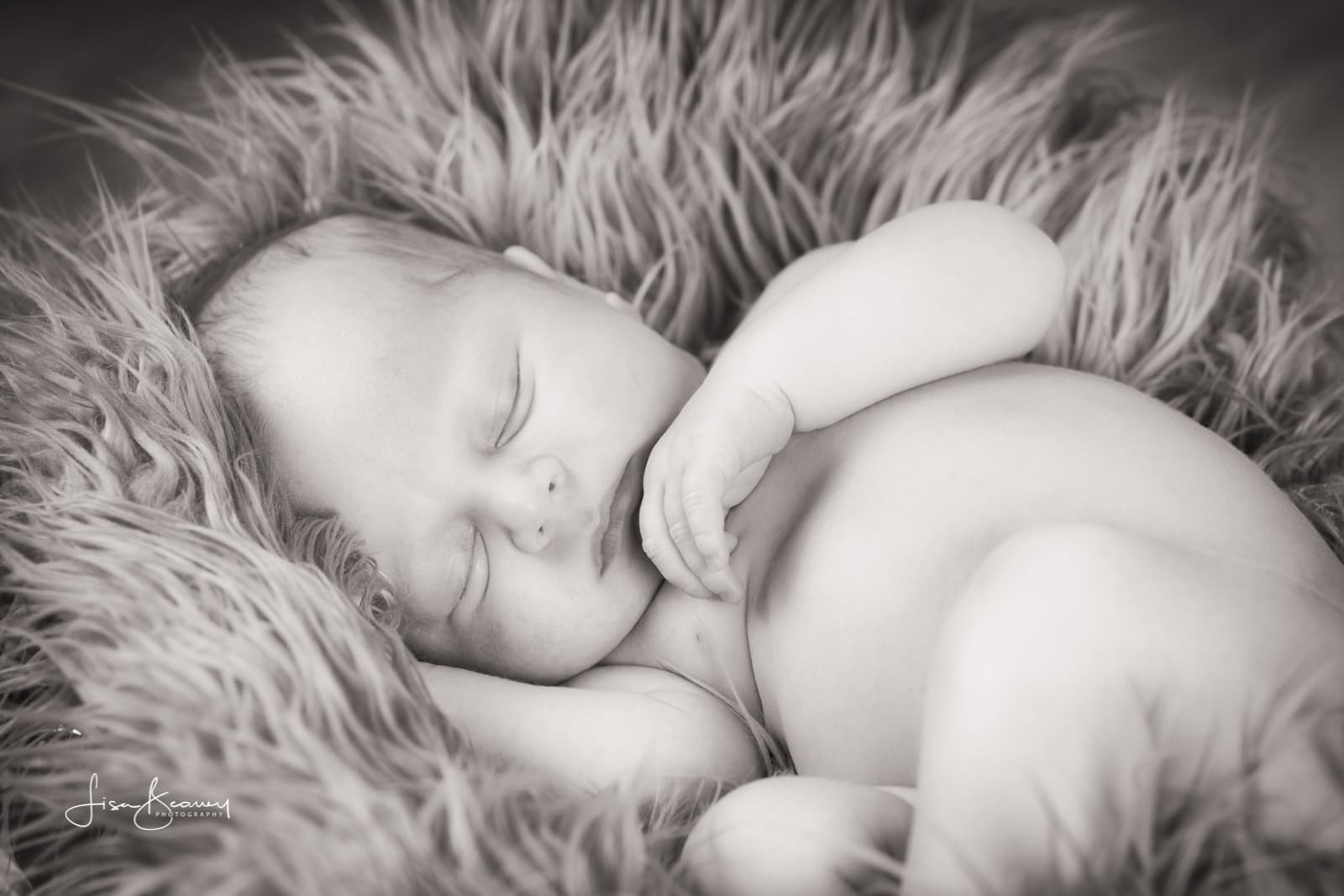
Lisa’s kit
Most of Lisa’s newborn photography is shot on a Sony A7R III with a ZEISS Batis Distagon T* 40mm f/2 CF lens.
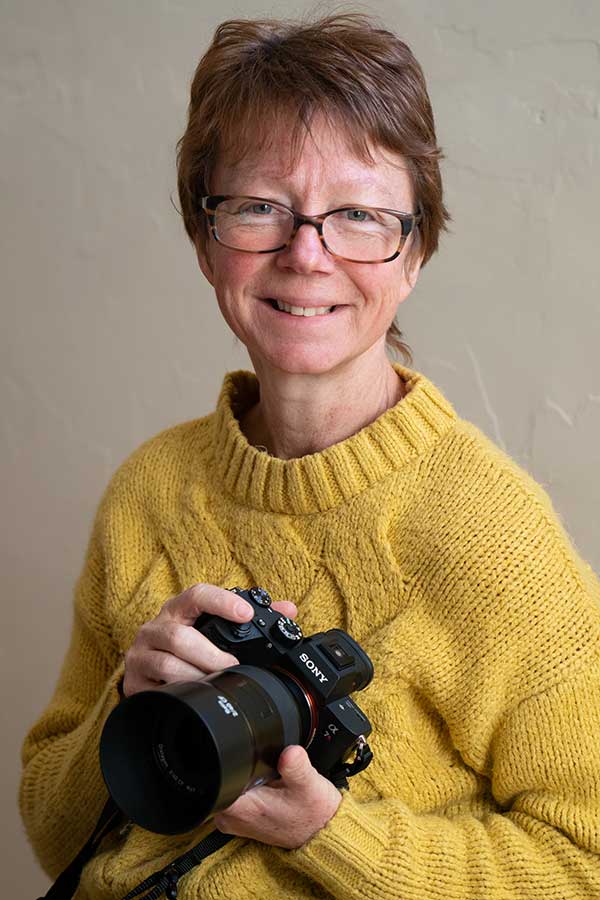
She explains:
‘The Sony A7R III is so much smaller and lighter than my old Canon. The Eye AF is fantastic and amazingly accurate. Or I use the tap to focus feature, which also works brilliantly. You can shoot at a really high ISO with the Sony though I tend not to work much above ISO 6400 for my newborns.
‘There’s just something about my ZEISS Batis lenses that I find hard to put into words. They’re incredibly sharp where you want them to be, but then you get a lovely fall off into that softness that just looks nicer than with other lenses. When you’re spending you’re own money on kit, I’d rather spend a little bit more on a lens that will give me photos that look a bit different. The first Batis I ever bought was the 85mm because I wanted a really good portrait lens. Then I added the 25mm and 135mm. Now there is the 40mm f/2 – I find that to be the ideal focal length for my newborns, and it means I can be at the perfect working distance from my subject. It also offers very close focusing so I can do detail shots of tiny fingers and hands.
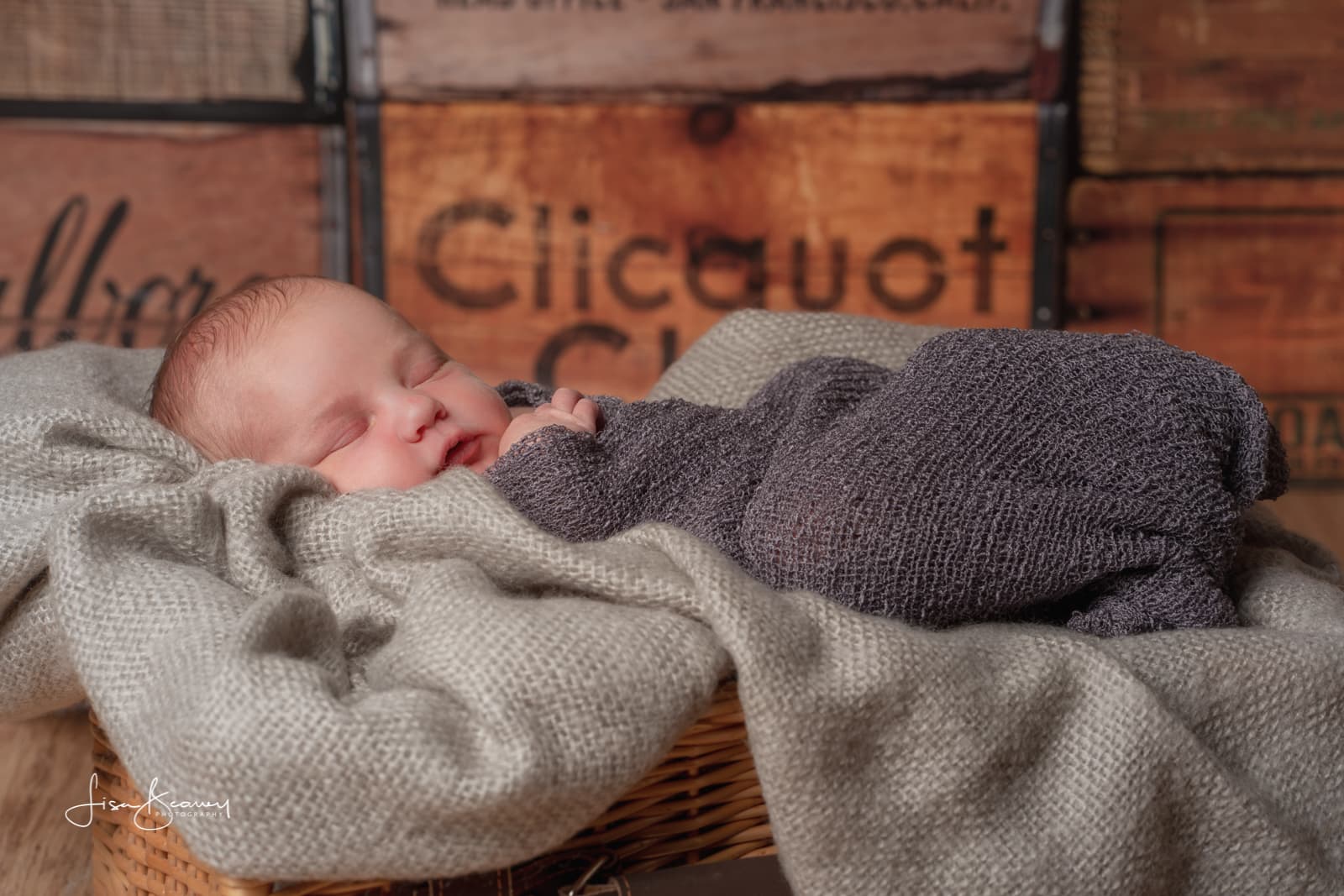
Lisa’s Tips for photographing newborns
- Ideally do the shoot in their first two weeks. I photograph babies up to six weeks old but they start to lose that ‘tiny baby newborn’ look. Also the fathers usually get two weeks parental leave, which gives you a window when both parents are available mid-week.
- Don’t overcomplicate it. Keep it as simple as you can. Don’t use too many props and accessories. If you don’t already have lighting kit learn to get the best out of natural light until you’re confident enough to know what you want in the way of direction and quality of light.
- Stick to one camera and one lens because that way you will get to know it inside out and that will make a real difference. Some people think that the answer to solving their photography issues is just to buy more and more kit rather than learning to use what they have got to the best of its ability.
- I will either go to a client’s home or they can come to the studio. It’s easy to set yourself up as a mobile photographer and just go to people’s houses. You don’t need much space. Just set up in a corner and use window light or a single flash head. About 50% of my location shoots are lit by flash. I use Elinchrom Quadra lights because they’re battery powered, so no cables to trip over.
- I position the set so the light source is coming from one side, because you want shadows and for the light to have some direction. Flat lighting is boring. I usually use the small softbox, which gives me more directional light. I place it quite close and on very low power. That way it gives softer shadows – the further away the light is the harder the shadows.
- I expose for the baby’s skin, usually using a handheld Sekonic meter. I use manual exposure, with my white balance set to flash (it’s a fraction warmer than the daylight setting). If you’re working in someone’s home you may have horrible mixed lighting going on so I turn off all the room lights. Otherwise you end up with colour casts.
- Learn a bit about baby safety because newborn babies are fragile, precious things. Their circulation isn’t good, so you may find that depending on how you lay them, they may start going a bit blue on one side. Make sure that you’ve got somebody whose sole job is to keep an eye on the baby. I usually have the mum kneeling down really close, as a spotter.
- I mould my beanbag to create a bowl shape for the baby. (On location I may use the clients’ furniture). I have a collection of blankets that I use as backdrops, clipped to a couple of lighting stands and a background pole, and draped over the beanbag. Sometimes I use a printed vinyl backdrop.
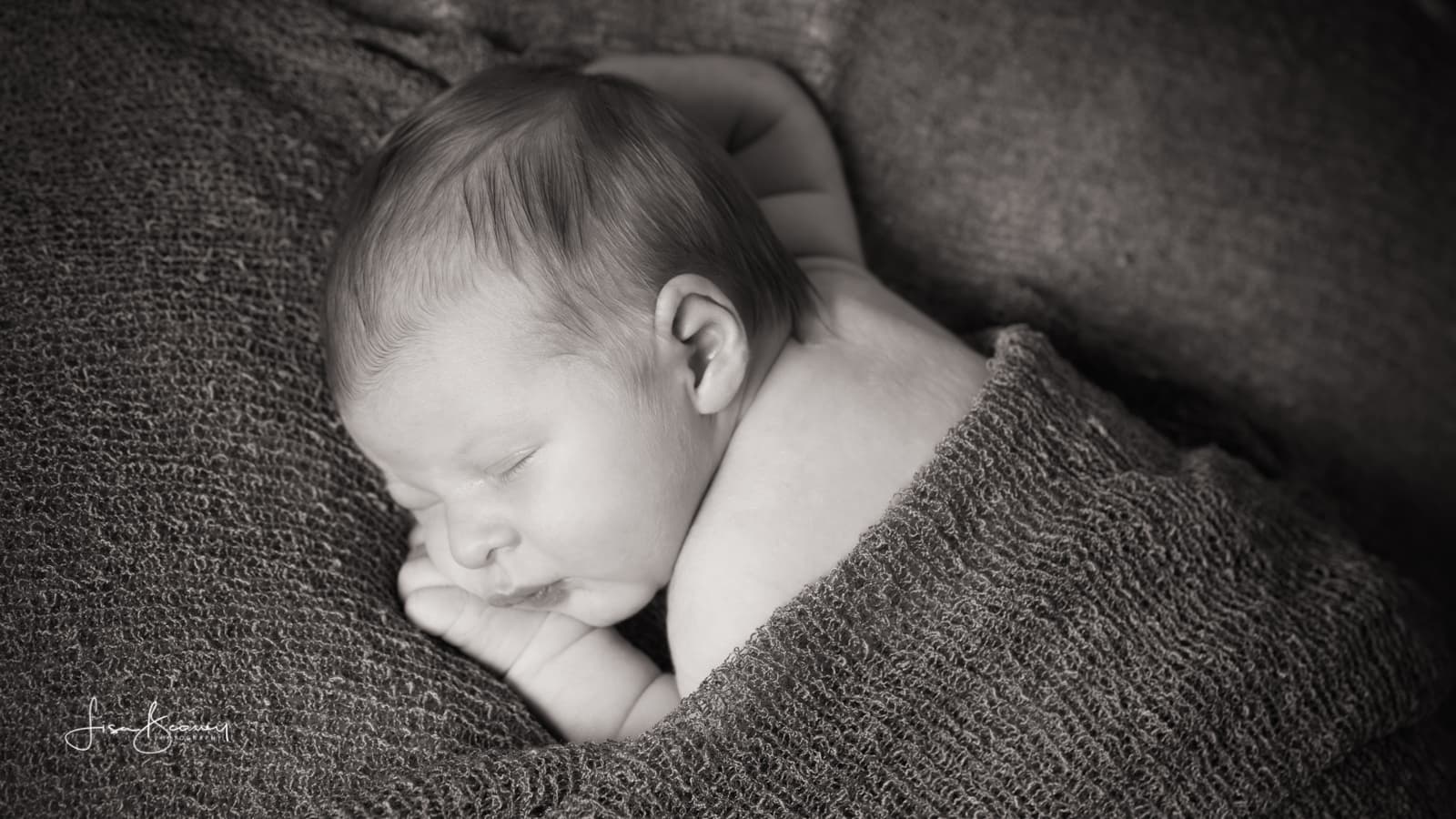
- You need to make sure the babies are in a deep sleep before you can really pose them, and that can take a couple of hours. I tell the mums to feed the baby when they get here. That makes them more likely to go to sleep. (But it also makes them more likely to wee). Don’t be in a hurry. I try not to book more than one newborn shoot in a day and will never do more than two.
- Newborns are quite flexible and if they’re in deep sleep you can move them and position and pose them. I try and keep it quite natural. I don’t pose the babies like little frogs, which seems to be fashionable now. Fashions also go out of fashion but the classic natural look is timeless. What I do won’t date in two years’ time.
- I usually shoot from a low position and compose looking down on the rear screen, which is tilted at 90°. This allows me to maintain eye contact with my subject and talk to the mother without having a barrier in front of my face. When you’re working up close, it’s no good shooting at f/1.8 or f/2 unless you only want their eyelashes in focus. To get the whole baby in focus you’ll need to be working at around f/5.6 to f/8. I always focus on the eyes.
- It’s rare to get through a shoot without being wee’d on, poo’d on or thrown up over – or all three. So everything you use must be machine washable. That’s why I put a towel down under the backdrop blanket – to soak up anything that comes out of the baby. And it’s why my beanbag has a wipe-clean surface – so I can disinfect it with my Dettol spray afterwards.
- Because newborn babies have been submerged in water for nine months, have a thick waxy covering on their skin, and have come out into air and pollution, they can be quite spotty and their skin can be flaky. So you need to edit all of that out. I do this myself in Lightroom and Photoshop. I use the Healing Brush in Lightroom for the smaller spots. In Photoshop I use a frequency separation technique, so I can edit the skin colour and texture separately.
- Then ideally, I show the photos to the parents as a slideshow set to music. They come back to the studio if they are local. If not, we’ll create a password-protected online slideshow set to music, on Zenfolio. The selected images are then printed by OneVision Imaging.
- For anyone thinking of venturing into this as a business, Lisa stresses the importance of networking on social media – it’s where most of her work comes from. ‘Join local Facebook groups, and online parenting communities like Mumsnet. Instagram works well, too. Clients will often find you there before looking at your website.’
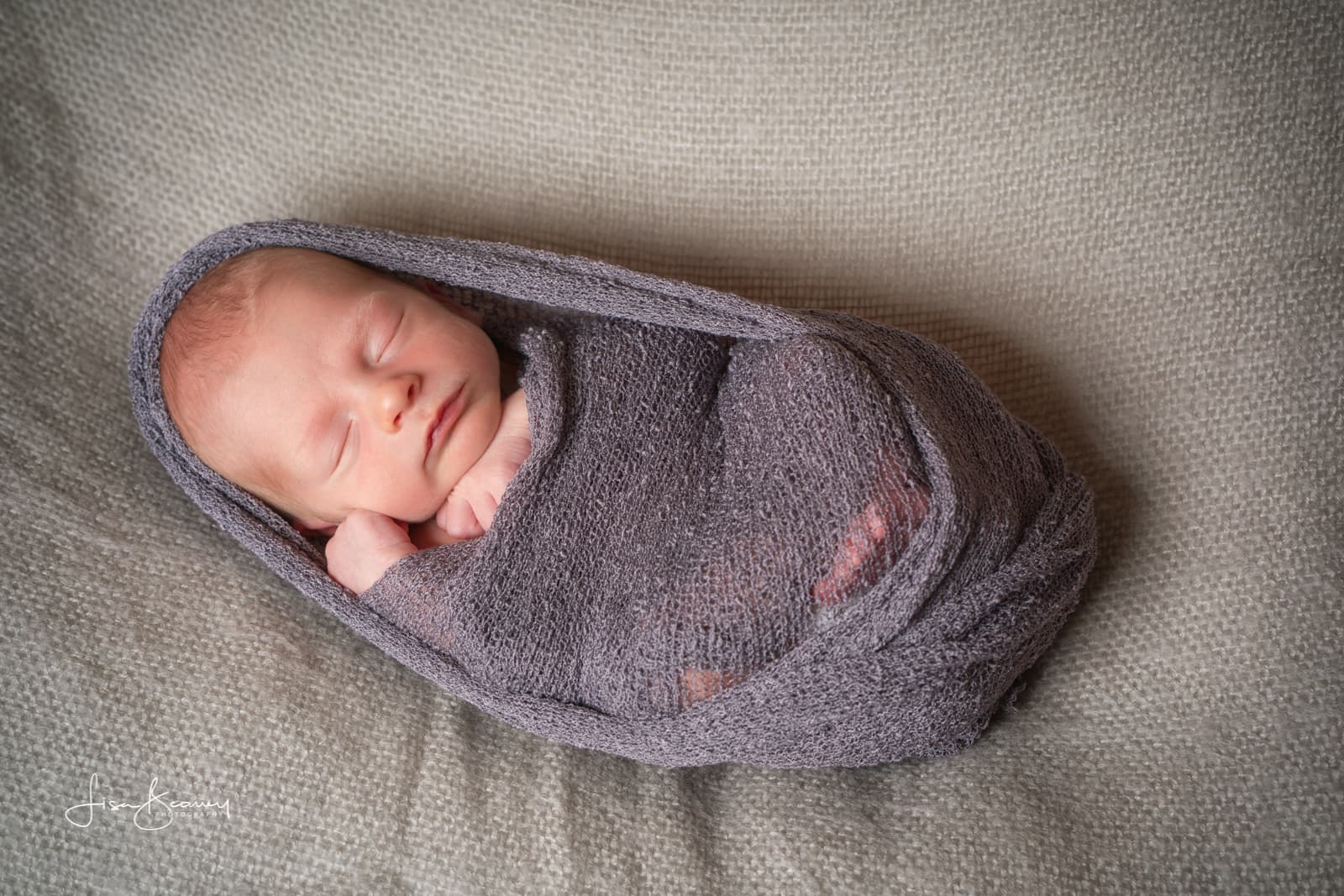
To read more
To see more of Lisa’s work visit her website or follow her on Facebook.
Read about the Batis 40mm 2/40 CF and other Batis lenses on the ZEISS website
Read AP’s review of the ZEISS Batis 2/40 CF
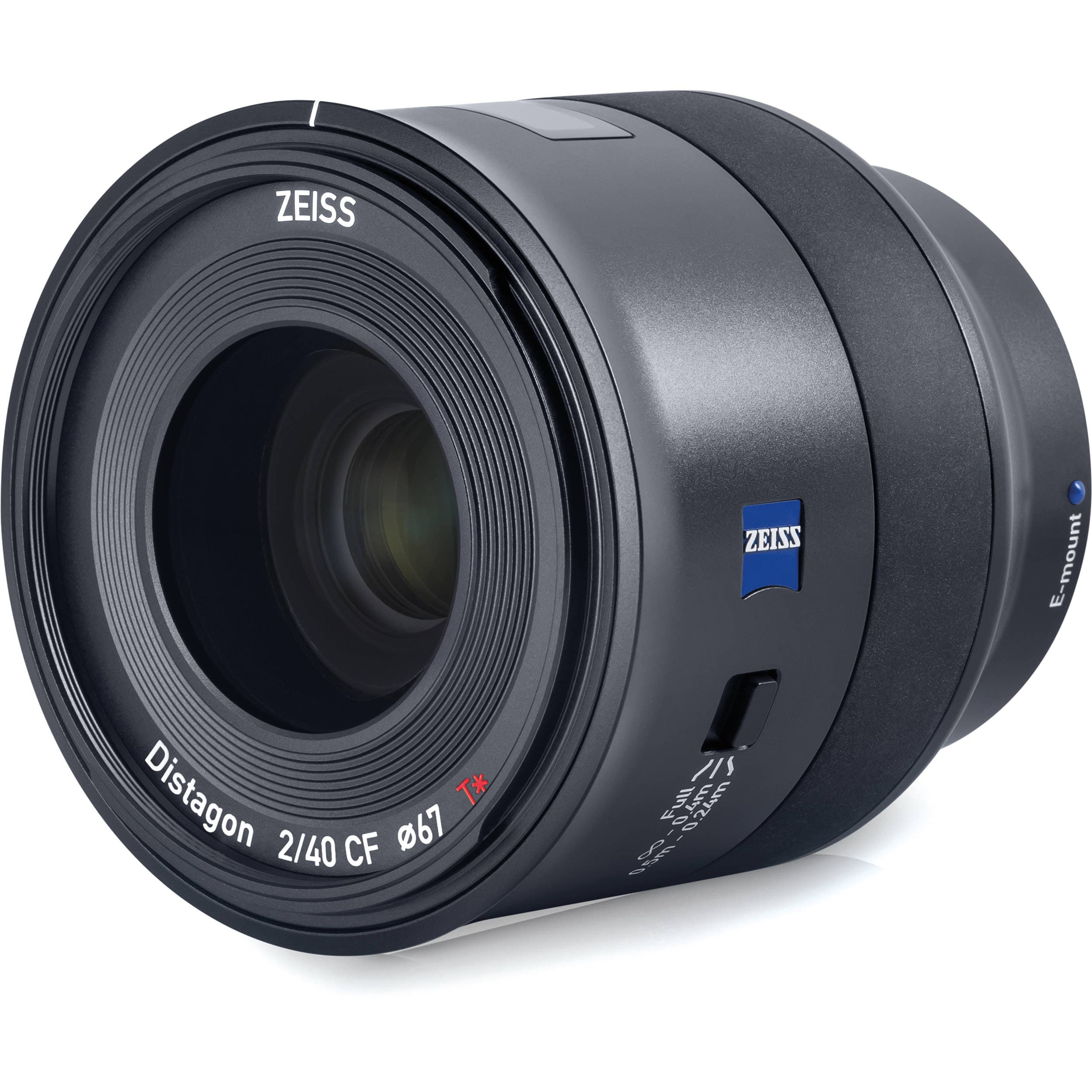
Lisa shoots most of her newborn baby photography using the ZEISS Batis 40mm f/2 CF lens







